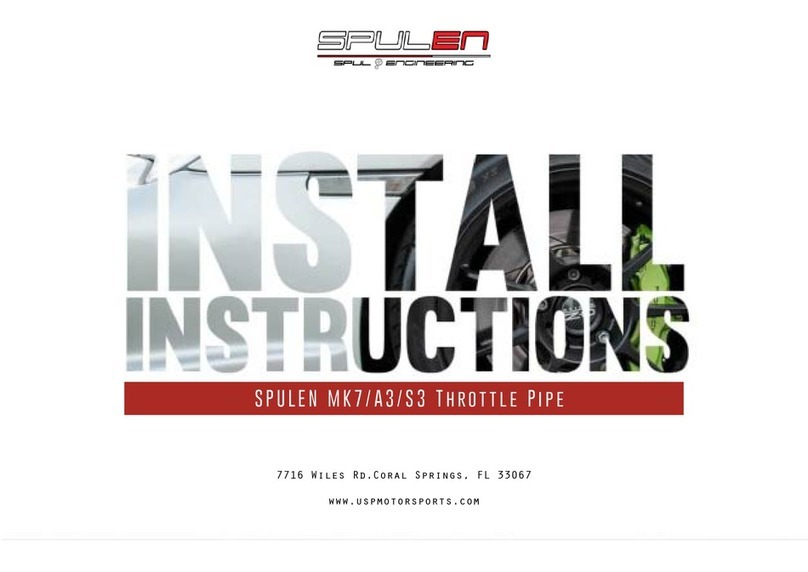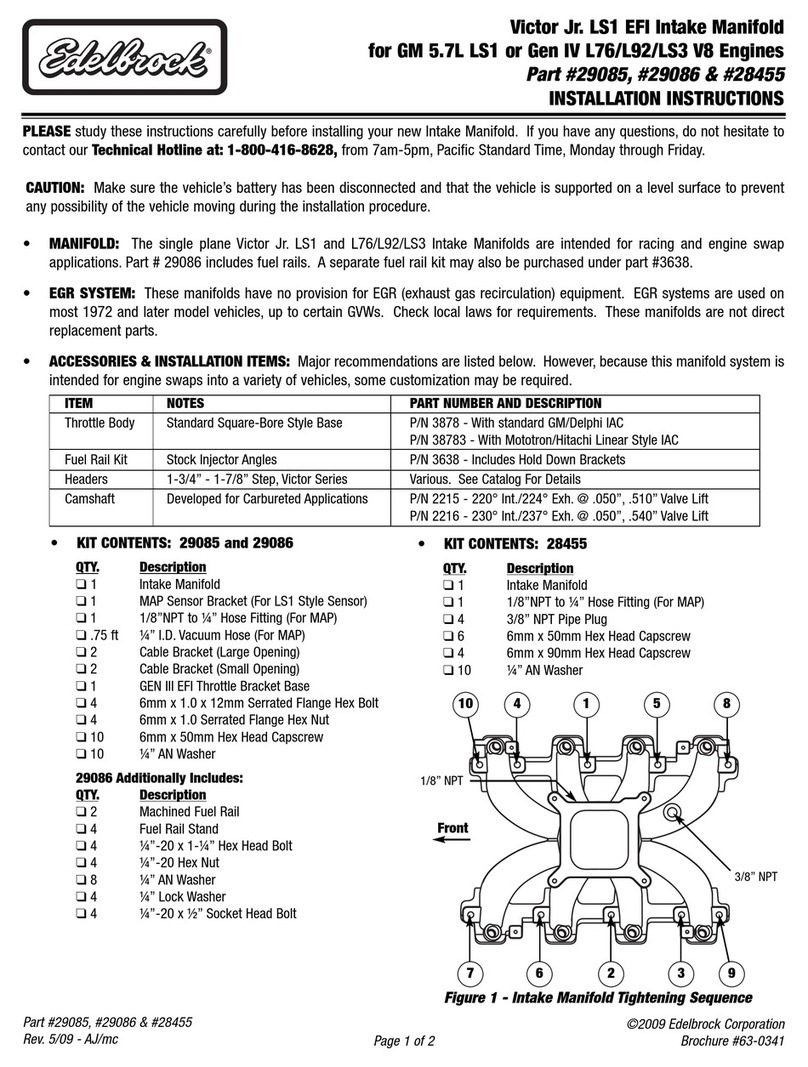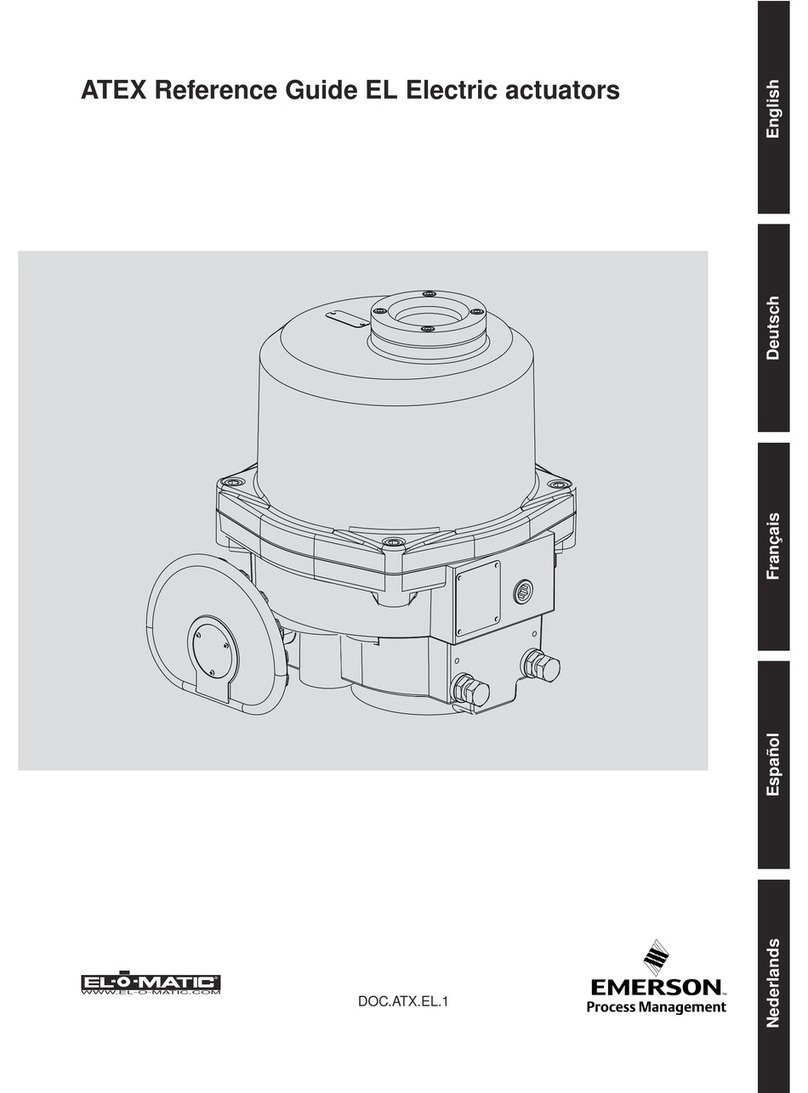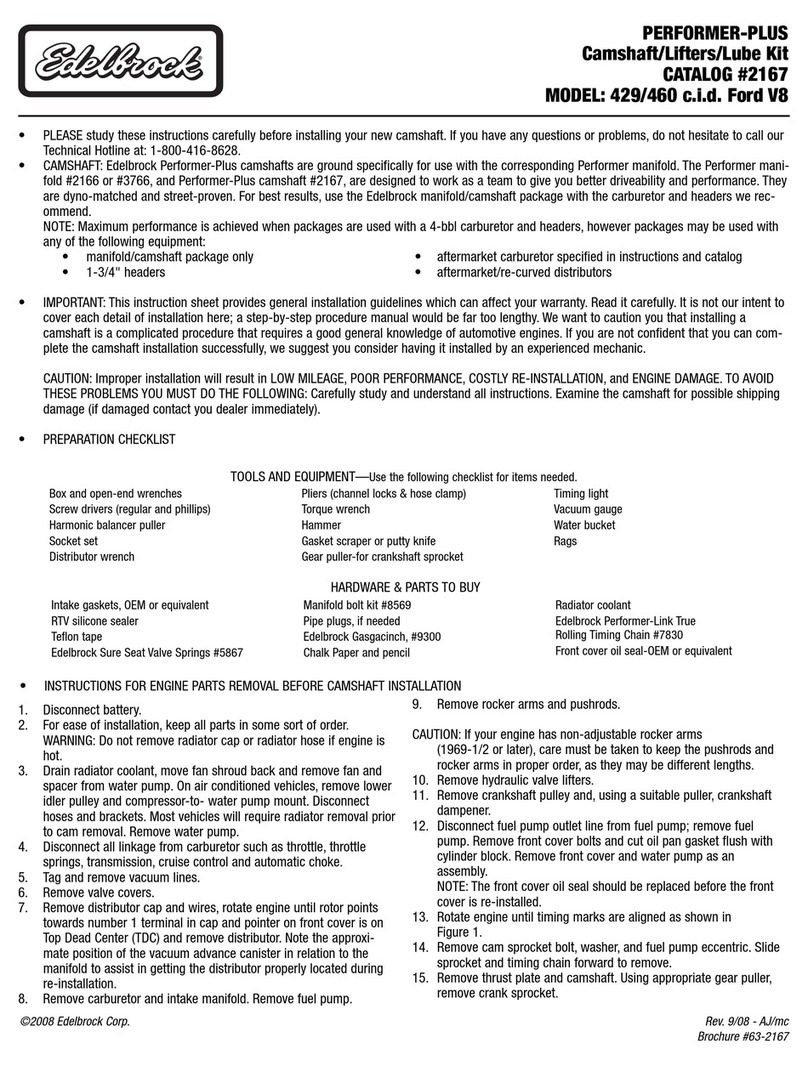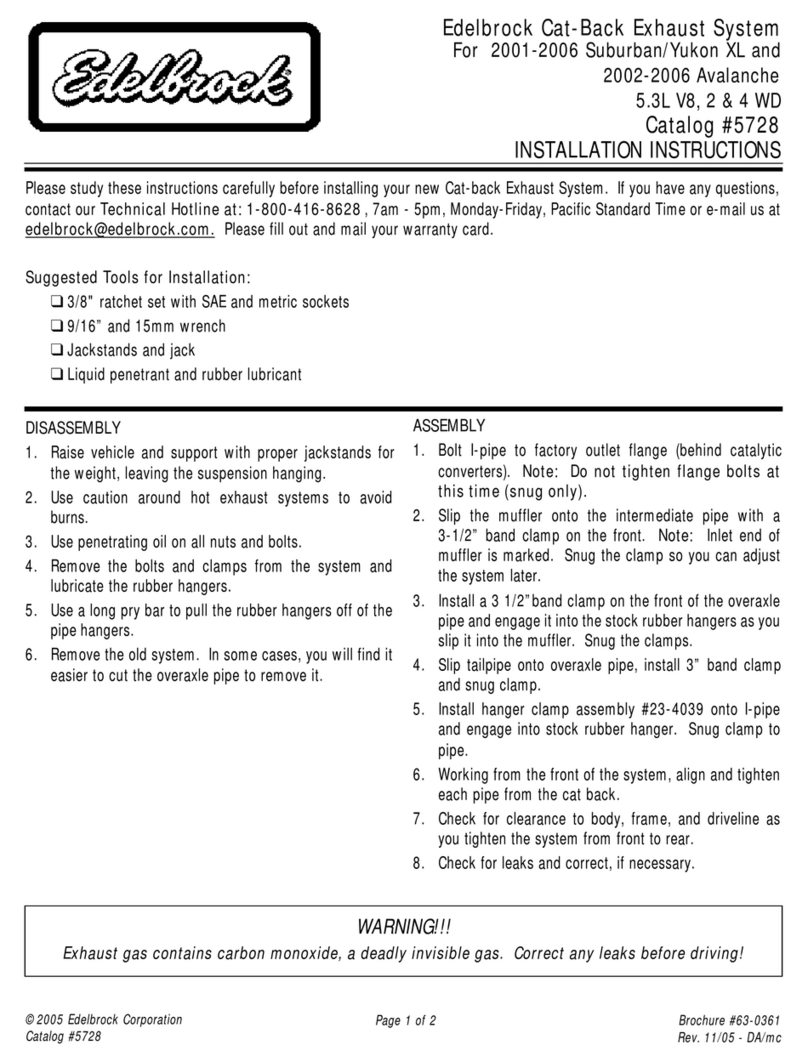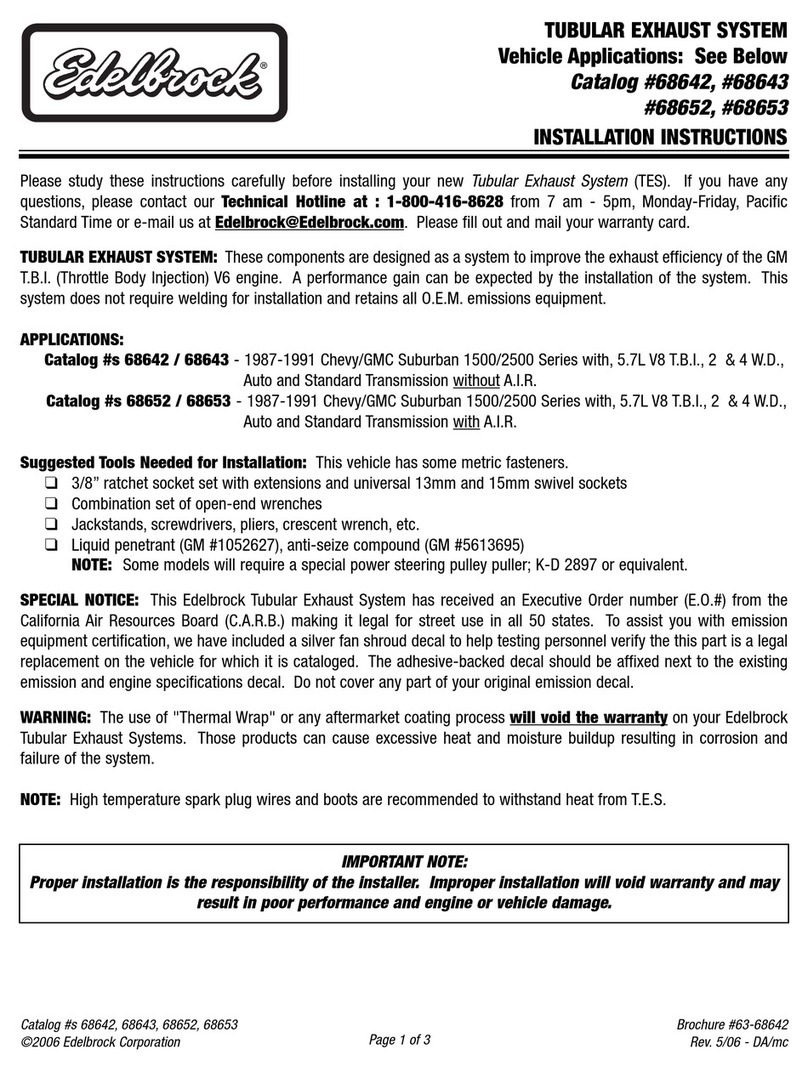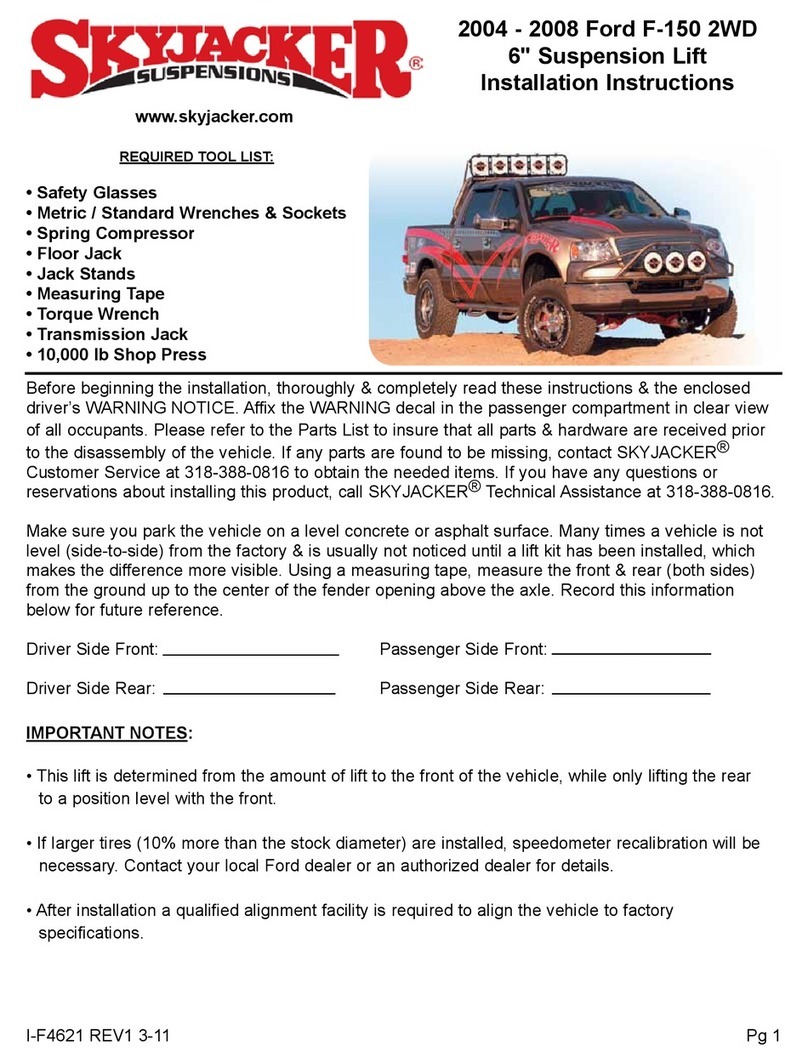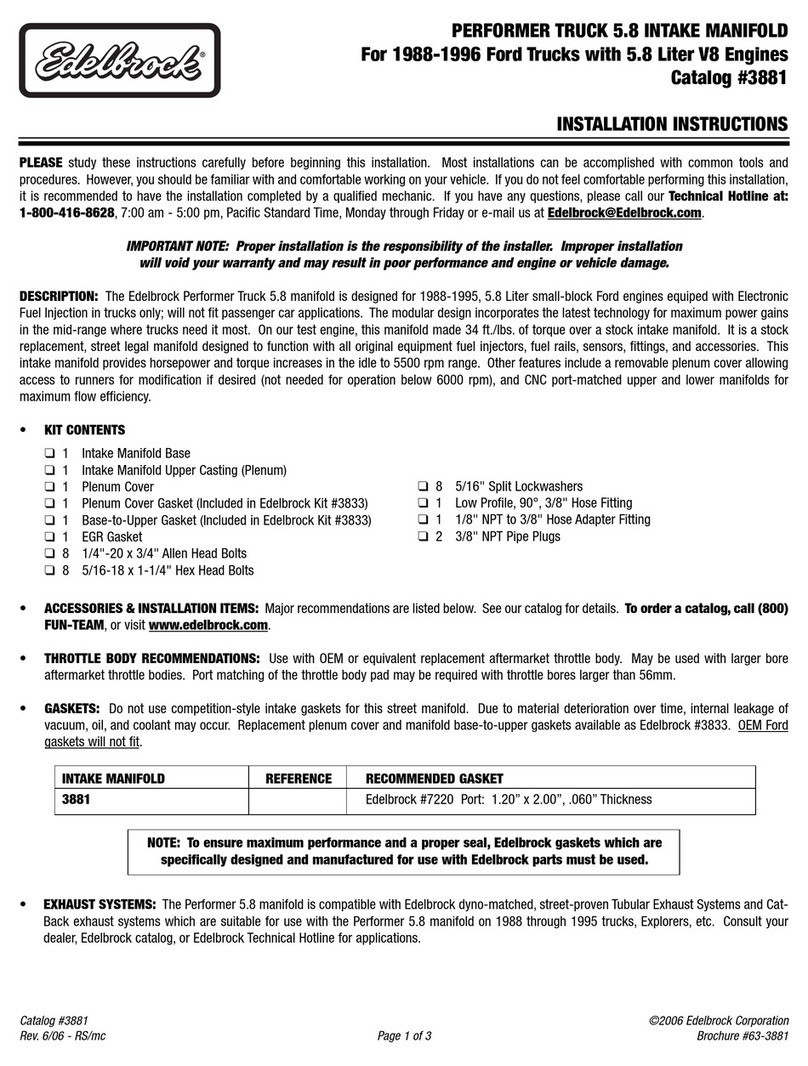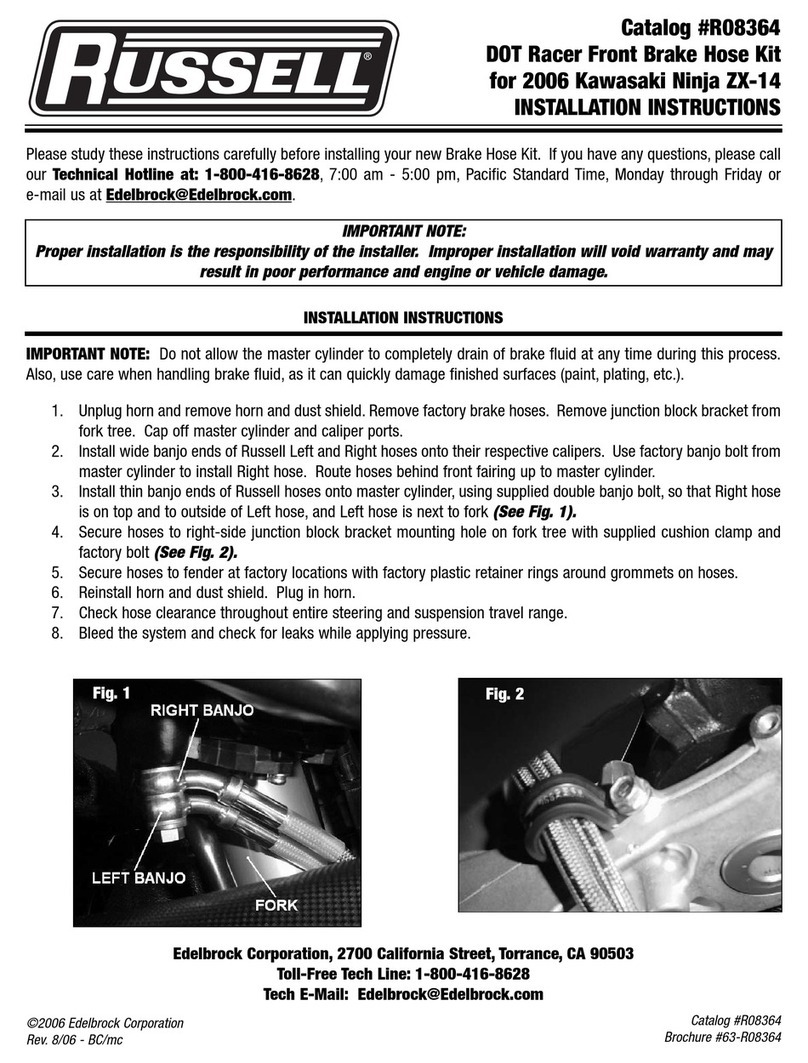Intellitronix AP10002 User manual

1-AP 10002 Intellitronix (rev. 03/2018) www.intellitronix.com
Made in America Lifetime Guarantee
Thank you for purchasing this instrument from Intellitronix. We value our customers!
INSTALLATION GUIDE
Six Gauge Universal Analog Dash Panel
Part Number: AP10002
* Always disconnect the battery before attempting any electrical work on your vehicle. *
KIT COMPONENTS
◊One (1) Assembled Analog Circuit Board (with Speedometer, Tachometer, Voltmeter, Water
Temp., Fuel Level and Oil Pressure Gauges –with lens and two attached mounting
brackets.
◊One (1) Temperature Sending Unit (S8013)
* 1/8” NPT, 0-255 Deg., 1/2” NPT Bushing
◊One (1) Pressure Sending Unit (S8434)
* 1/8” NPT, 0-100 PSI Oil Pressure
◊One (1) Universal Speedometer Sensor (S9013)
* 7/8” NPT Industry Standard threads
PANEL MOUNTING INSTRUCTIONS
Carefully remove existing gauges. You may need to alter the dashboard in your vehicle to
accommodate this new Analog panel. Remove the two mounting brackets from the back of the
new panel and reinstall them on the backside of your vehicle’s dashboard.
WIRING INSTRUCTIONS
Note: Automotive circuit connectors are the preferred method of connecting wires. However, you may
solder if you prefer.
Ground - Black This is the main ground for the display system. A wire should be run from this
board to the vehicle’s main engine block ground. Use 18 AWG or larger wire to ensure sufficient
grounding. Proper vehicle grounding is extremely important for any gauges (or electronics) to

2-AP 10002 Intellitronix (rev. 03/2018) www.intellitronix.com
operate correctly. The engine block should have heavy ground cables to the battery, frame, and
firewall. Failure to properly ground the engine block, senders, or digital dash can cause incorrect
or erratic operation.
Power - Pink Connect the power terminal to accessory +12V power from the fuse panel or
vehicle wiring harness. This terminal should have power when the key is on or in accessory
position. Use 18 AWG wire to ensure the system receives a sufficient power feed.
Battery Red Connect the +12 Volt terminal to constant +12V power from the battery.
Dimmer Purple Connect to the parking lights to dim the LEDs 50% when the headlights are
on. However, do not connect to the headlight rheostat control wire; the dimming feature will not
work properly.
Turn Signals - Grey Two 18-gauge wires, one for each signal. Connect each wire to its
corresponding indicator circuit.
High-Beam –Brown Connect the brown wire on the speedometer panel to your high beam
headlight.
Brake –Tan Connect to the parking brake wire from the engine.
Oil Pressure - Orange Replace the existing oil pressure sending unit with the unit included.
Do not use Teflon tape or other sealer on the new sending unit’s threads to avoid inaccurate
ground connections as the sending units get their ground from the threads. The oil sender gets its
grounding from the threading into the engine block and it is crucial it is grounded properly.
Connect to the sending unit.
Water - Blue Replace the existing water temperature sending unit with the unit included. The
gauge is incompatible with other sending units. Do not use Teflon tape or other sealer on the new
sending unit’s threads to avoid inaccurate readings. Connect the blue wire to the sending unit.
Fuel –Yellow The fuel gauge sending unit is not normally supplied because in most cases,
the display system can use the existing fuel level sending unit in the tank. If your wiring harness
already has a single wire routed through the vehicle for the fuel sender then it may be used. If
using a wire from an external harness, make sure that the wire does not have power. Fuel senders
reference their ground from the sender mounting plate. Connect the yellow wire to the factory
sending unit. Be sure the toggle settings on the switch
match those displayed on the panel, as illustrated.
Both switches in the up position for Ford/Chrysler
For GM - #1 toggle is up, # 2 toggle is down.
Both switches in the down position for VDO
For Universal/Stewart Warner - #1 toggle is down,
# 2 toggle is up.

3-AP 10002 Intellitronix (rev. 03/2018) www.intellitronix.com
Tachometer –Green –Connect the wire from the tachometer to the negative terminal of the
coil or a direct tach output lead from your distributor or electronic control module. If you are
using an aftermarket capacitive discharge ignition system, such as an MSD, you must use the
designated ‘tach output’ connection on the electronic box. Do not make any connections directly
to the coil with this type of system.
There are two recall buttons on this dash: one at the bottom of the speedometer, the other at the
bottom of the tachometer. This tachometer is initially calibrated for use with 8 cylinder engines. If
you are using it with a 4 or 6 cylinder engines, you must recalibrate it for your specific application
by pushing the tach recall button in accordance with the programming modes shown below.
To set the cylinder selection: With the ignition off, hold in the right button and power the dash on.
The tach will then enter a setup mode where the needle will move (between the zero and one on
the face of the instrument) to indicate 400 (4 cylinder), 600 (6 cylinder) or 800 (8 Cylinder)
continuously. When the needle gets to the desired setting, tap the right button once more. It is
now set and will enter normal operating mode. To see the high RPM/tach setting, hold down the
right button. It will reset after five seconds.
Intellitronix Digital Performance Speedometer
Speedometer –White Disconnect the mechanical speedometer cable from the transmission
and thread the new electronic sensor onto the transmission. This unit comes with a 3-wire sensor.
If you are using this sensor, the white wire is the speed signal; connect this to the speed signal
wire on your gauge. The red and black wires in the cable are switched power (12VDC) and
ground, respectively. Twisting the ground and signal wires around each other will provide an
additional level of interference protection. The speed signal wire should not be routed alongside
the tachometer, ignition, or any other high-current or high-voltage wires. For vehicles which have
a vehicle speed signal from a transmission -- one wire goes to the speedometer, and the other to
the ground -- or Emission Control Module. Tap into the Vehicle Speed Sensor wire (consult a
vehicle service manual or wiring diagram to determine the correct wire color) and connect it to
the white speed sending wire on the dash.
The recall button on the speedometer operates as follows:
Once –cycles between Trip Mode, Odometer Mode and the clock.
Clock –To set the clock push quickly push both buttons simultaneously and release . Use the
buttons to scroll to the correct setting.
While in Odometer Mode:
1. Hold LEFT to enter Recall/Setting Mode
2. ¼ Mile Recall
3. 60 Second Time Recall
4. Odometer Setting
5. Calibration
CALIBRATION
Note: If using the Intellitronix GPS Sending Unit (not included), the speedometer does not need
to be calibrated.
The speedometer leaves the factory with a pre-set industry standard setting of 8,000 pulses per

4-AP 10002 Intellitronix (rev. 03/2018) www.intellitronix.com
mile. Chances are that you may not need to recalibrate your speedometer, unless you have
changed the original tire size or the rear end gear ratio.
Note: Do not attempt to recalibrate your speedometer until after it is working properly and you
have determined that the speed is incorrect. The calibration procedure will NOT correct a faulty
installation or improper wiring. If you attempt to recalibrate your speedometer without making
sure the speedometer is receiving pulses from the sending unit, the speedometer will display
‘Err’ and default back to the factory settings.
To calibrate:
1. Locate a measured mile where you can safely start and stop your vehicle. By running the
vehicle over this measured distance, the speedometer will learn the number of pulses outputted
by the speedometer sensor during a specific measured distance. It will then use this acquired
data to calibrate itself for accurate reading. There is a small recall push-button in the center of the
panel used to calibrate and read all of the data stored in the speedometer. After installing your
speedometer according to the wiring instructions, when the ignition is on it should immediately
display the default screen of 0 MPH, if the vehicle is not moving.
NOTE: You will now need to drive your vehicle to the predetermined measured mile. During this
trip, the speedometer should read something other than 0 MPH. If it does not change, return and
locate the problem before continuing. Otherwise, proceed with the calibration.
2. Stop at the beginning of the measured mile with your vehicle running and in odometer mode
(NOT trip mode), press and hold the push-button until the odometer displays ‘HI-SP’. On its own,
the gauge will then cycle through the recorded performance in the following order: ‘0 – 60’, ‘1/4’,
‘ODO’, and ‘CAL’.
3. While ’CAL’ is displayed, quickly tap the push-button once. This will put the speedometer in
Program Mode. If you did not tap while ‘CAL’ is displayed, the pulses per mile will be displayed
on the odometer and the display will go back to MPH mode. Otherwise, you will now see ‘CAL’
displayed along with the number ‘0’. This indicates that the microprocessor is now ready for
calibration.
4. When you are ready, begin driving on the metered mile. You will notice that the reading will
start counting up. The odometer will begin to display the incoming pulse count. Drive the vehicle
through the measured mile (speed is not important, only the distance traveled).
5. At the end of the mile, stop and press the push-button again. The odometer will now display
the new number of speedometer pulses that were registered over the distance. The odometer will
continue to display the pulse reading for a few seconds. Once it reverts to the default mode, you
have successfully calibrated your speedometer.
Warning: If, while in ‘CAL’ mode, you do not move the vehicle but press the button again,
the microprocessor will NOT have received any data and the unit will display ‘Err’ and will
revert to the factory settings. At a minimum, drive some distance and return to the start if
necessary. If you miss stopping the display at ‘CAL’, simply repeat the steps.
Setting the Odometer
While scrolling through ‘CAL’ mode you will see ‘ODO’ appear. This will allow you to enter the
vehicle’s actual mileage. Press the trip button again at this point and you will enter the odometer

5-AP 10002 Intellitronix (rev. 03/2018) www.intellitronix.com
set up mode. Press quickly to change the number of the digit on the right. Press and hold to
advance to the next digit. Do this for all 5 digits.
For Example: To enter the mileage 23456 into the odometer, at the ‘ODO’ prompt, tap the small
black button (quickly) two times, until the number 2 is displayed. Then press and hold the button
until the numbers 20 are displayed. Tap the button 3 times until 23 is displayed. Press and hold
the button until 230 is displayed, and continue in this manner until 23456 is displayed. The speed-
ometer will advance to the home screen, five seconds after the last number is entered.
Recording and Viewing Performance Data
Follow these steps to record and recall Performance Data (high speed, ¼mile ET, and 0- 60 time):
1. Before each run, your car must be at a complete stop at the starting position. Press and hold the
push-button as it cycles through the performance data. At the end, the odometer will reset and all
performance data will be cleared. This will not affect your stored calibration value or the
odometer reading.
2. Press the push-button until ‘HI-SP’ is displayed. The gauge will automatically cycle through the
performance data.
3. Start the run, pass, session, etc., as mentioned above.
4. When finished, repeat Step 2 to view the data gathered from the run. While stopped, you can
view this data as often as you wish. However, once it finishes scrolling one time, the memory is
ready to record new data and will begin recording again once the vehicle starts to move. The
highest speed measured over multiple runs will be retained in memory.
# # #
Table of contents
Popular Automobile Part manuals by other brands
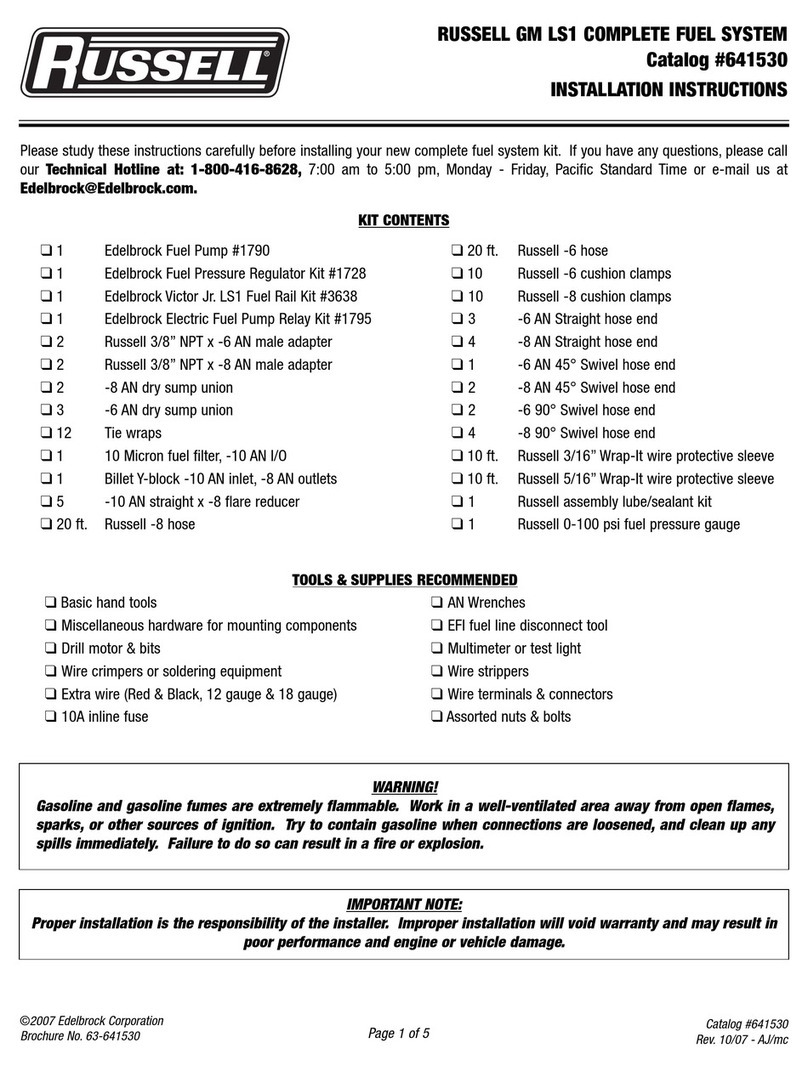
Edelbrock
Edelbrock Russell 641530 installation instructions
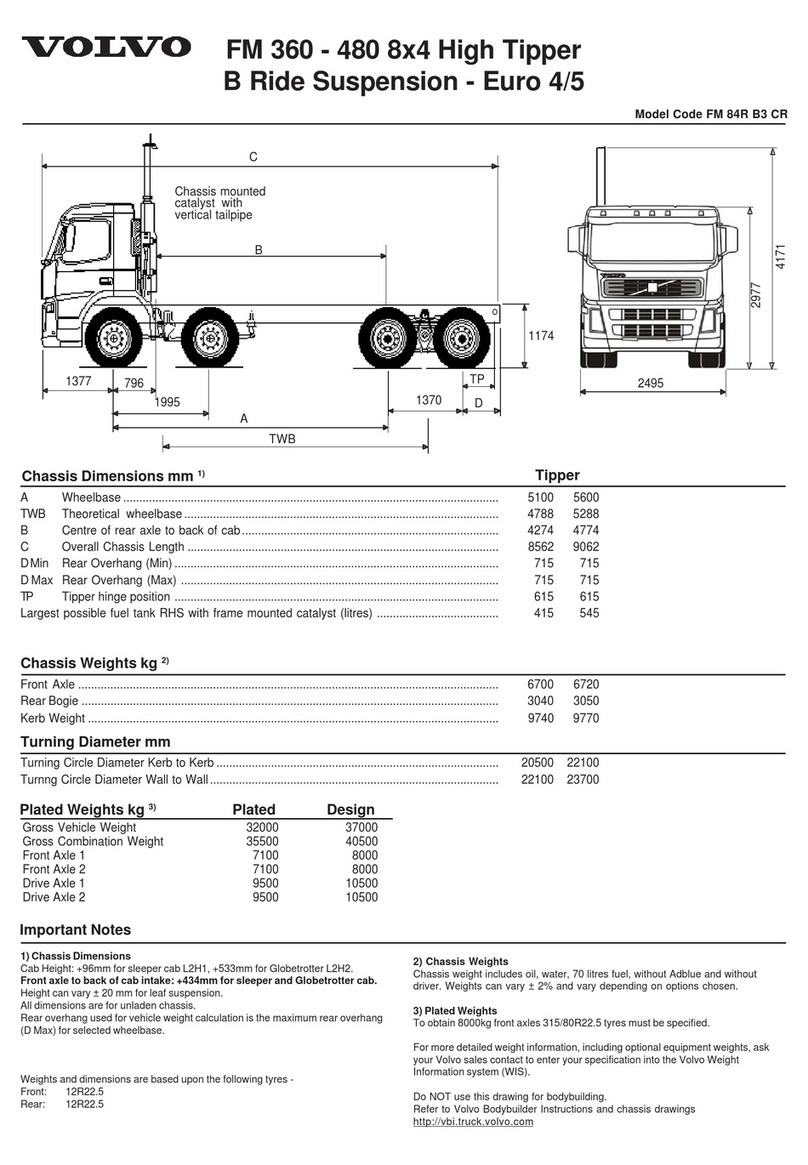
Volvo
Volvo FM 84R B3 CR Specification sheet
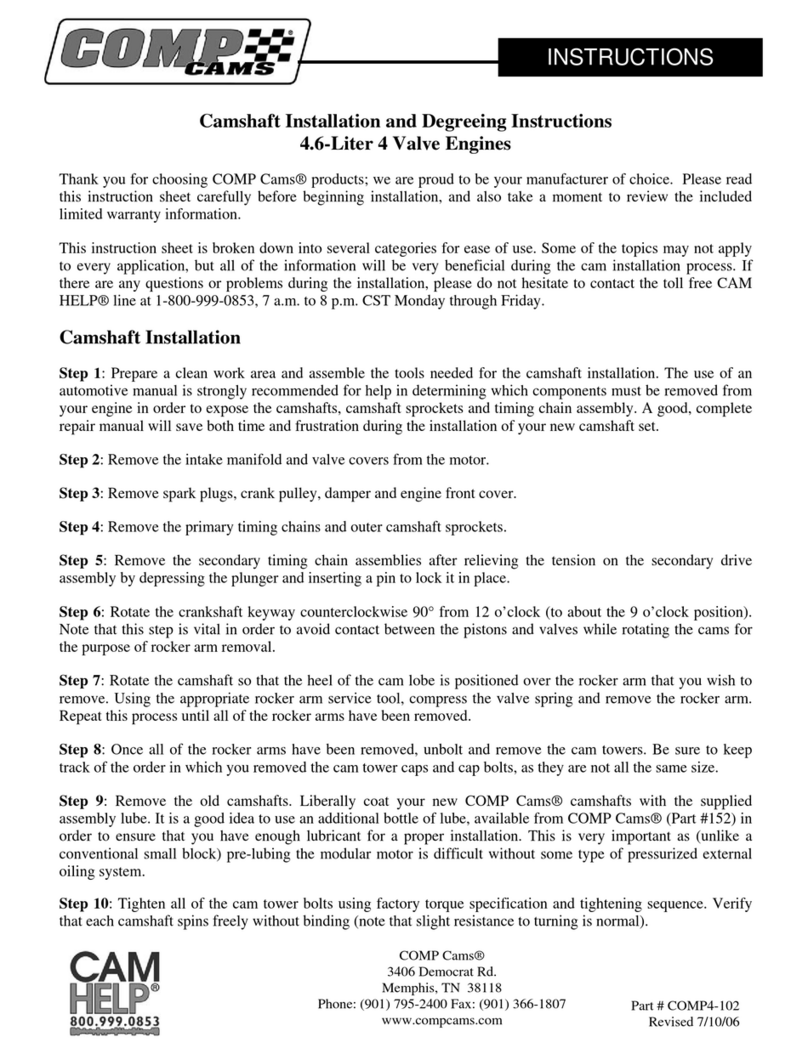
COMP Cams
COMP Cams COMP4-102 instructions
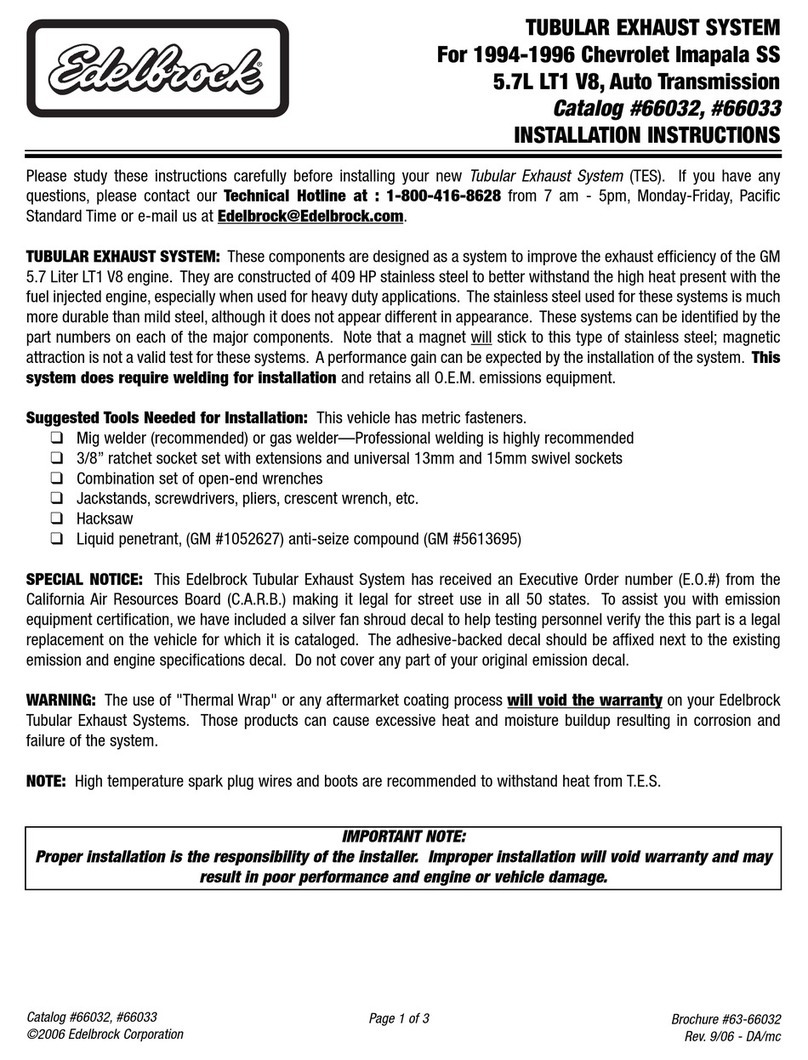
Edelbrock
Edelbrock Chevrolet Imapala 5.7L LT1 V8 installation instructions

Edelbrock
Edelbrock 5726 installation instructions

Edelbrock
Edelbrock 2994 installation instructions

